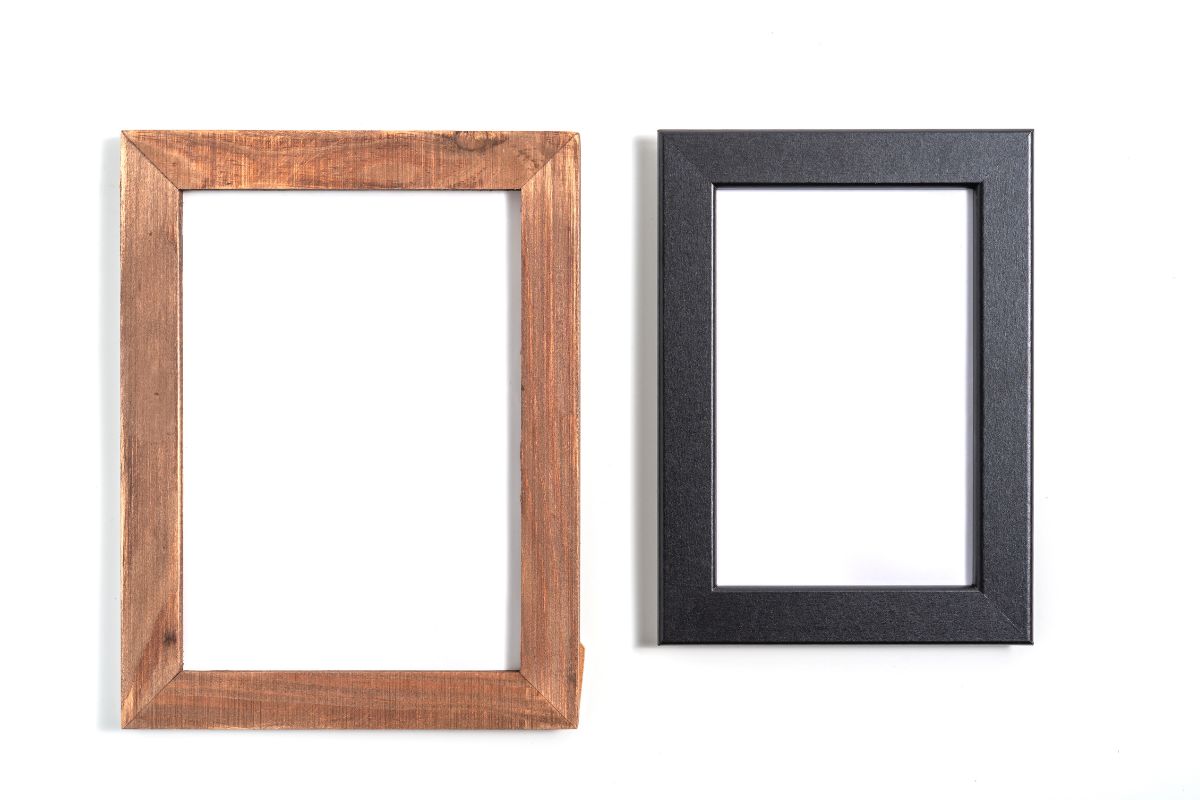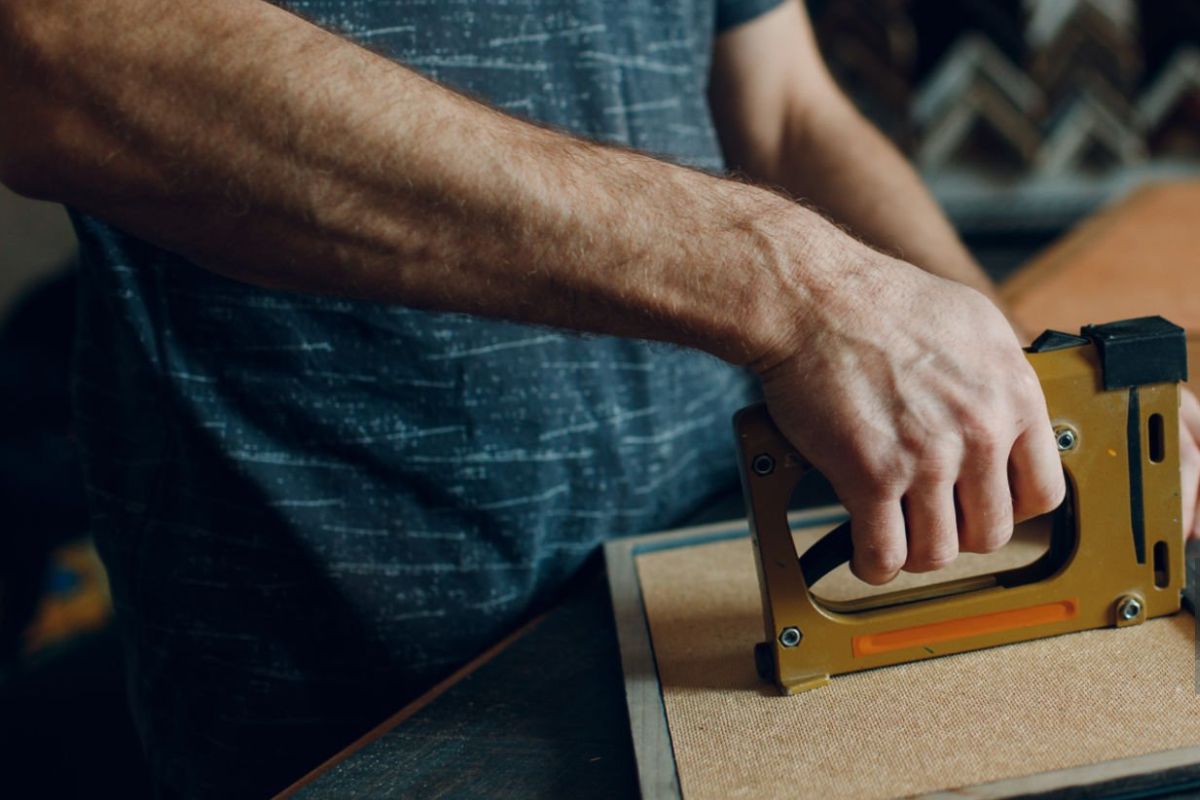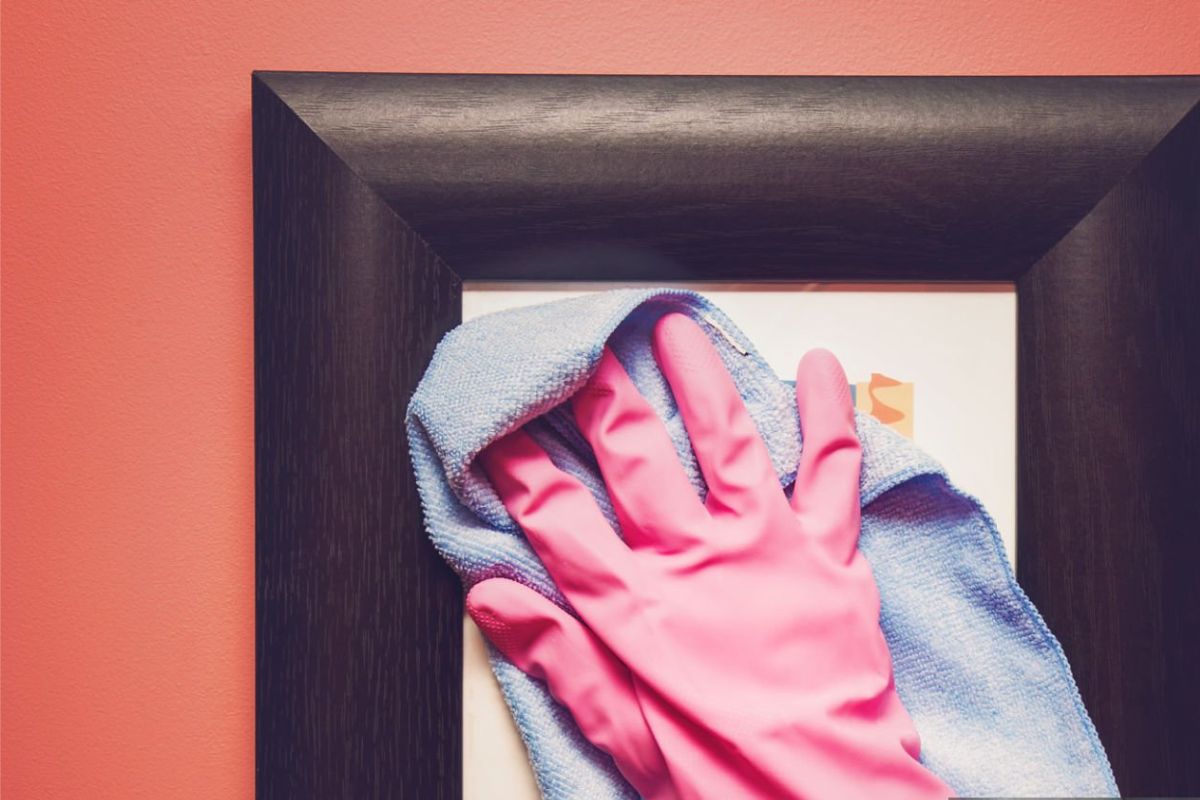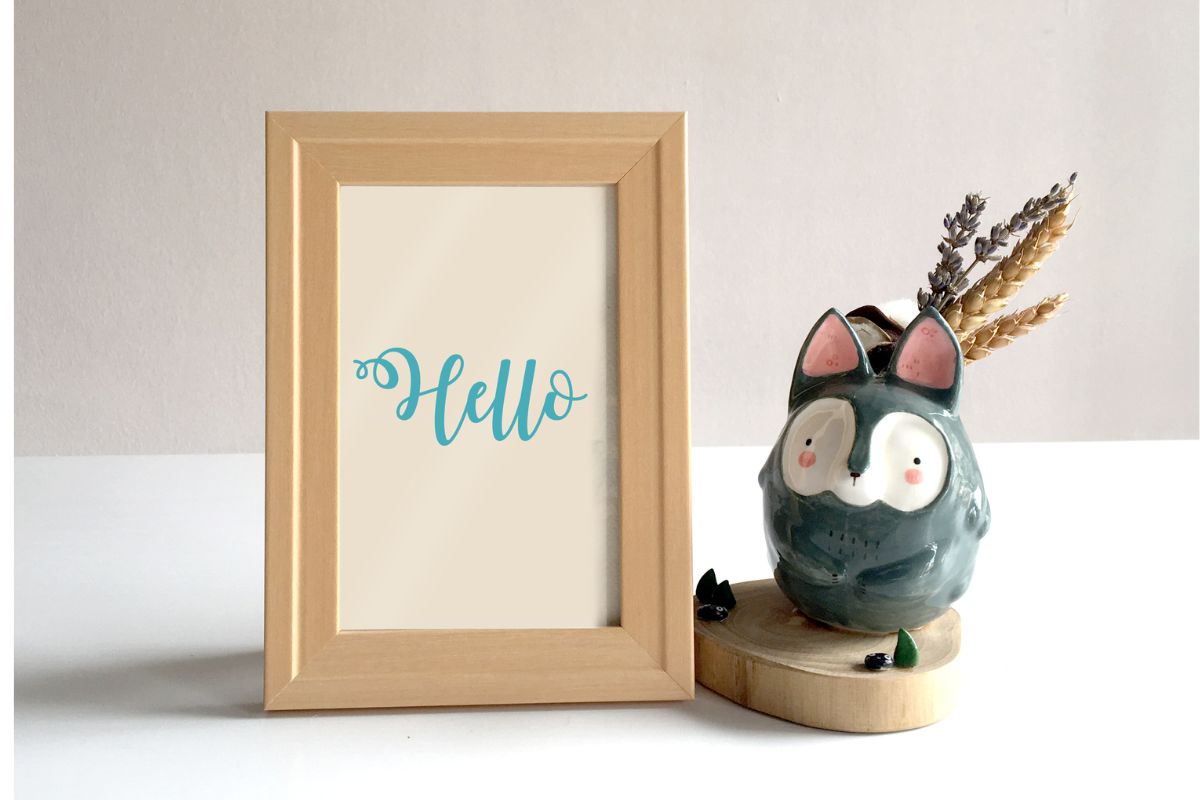Capturing memories is more than just a photograph; it’s about the experience and the story encased within a frame. This blog post is designed for stationery enthusiasts and creative spirits looking to craft a personalized photo frame that not only showcases their favorite moments but also reflects their unique style. Readers will discover how to select materials that resonate with their target market, create a custom design that stands out, and personalize their frames with decorative elements that add a signature touch.
Table of contents
- Key Takeaways
- Gather Materials for Your Custom Photo Frame
- Choose the Perfect Frame Design for Your Photos
- Personalize Your Frame With Creative Decorative Elements
- Assemble Your Photo Frame Step by Step
- Add Finishing Touches to Enhance Your Photo Frame
- Display and Showcase Your Handmade Photo Frame
- Conclusion
Additionally, the content will guide them through the assembly process and offer tips on adding finishing touches that elevate the overall presentation. By engaging with this post, you will learn how to make a photo frame that is not only aesthetically pleasing but can potentially meet the demand of a niche market, should you decide to price and brand it with a logo for resale.
Key Takeaways
- Base material choice is crucial for frame durability and printing compatibility
- The right tools and adhesives ensure quality assembly and product longevity
- Decorative elements, like beads and ribbons, can significantly increase product value
- Data analytics informs popular frame sizes and styles, enhancing market alignment
- Professional finishes like sealant or varnish protect the frame and enhance customer satisfaction
Gather Materials for Your Custom Photo Frame
Embarking on the creative journey of crafting a custom photo frame requires an investment in the right materials and tools. Selecting a quality wood or alternative base material sets the foundation for your frame, just as choosing the appropriate adhesives and tools determines the integrity of its assembly. To personalize your creation, gather an inventory of decorative elements, such as beads and ribbons, which reflect your brand and boost the potential for income through unique designs. This section outlines the essentials needed to transition from concept to tactile work of art.
Select the Right Wood or Base Material for Your Frame
Choosing the appropriate wood or base material is integral to the success of a print on demand business like Redbubble, where personalization and art come together to create unique products. The wood selected must not only be durable to ensure product longevity but also workable, allowing for detailed customizations that meet customer preferences. Print on demand entrepreneurs should consider woods like pine for its ease of handling or bamboo for its eco-friendly appeal, each offering a distinct aesthetic that enhances the end product.
The advent of automation in the print on demand sector enables efficient personalization of photo frames at scale. However, the selection of the base material still requires careful consideration, prioritizing aspects such as the material’s compatibility with various printing techniques and its overall impact on the artistic presentation. By selecting materials that are both print-friendly and visually appealing, creators can elevate their craft, meeting the expectations of art enthusiasts seeking exceptional personalized items.
Choose Essential Tools and Adhesives for Assembly
When constructing a custom photo frame for a print on demand company, the choice of assembly tools and adhesives is more than a matter of functionality; it incorporates a business’s commitment to sustainability and customer satisfaction. Companies thrive when they use eco-friendly adhesives that ensure the longevity of the product, protecting their creations and the customer’s cherished image without compromising the environment. The right adhesive selection not only contributes to the robustness of the frame but also to the company’s reputation for quality and responsibility.
In the meticulous process of assembling a custom photo frame, precision tools play a pivotal role. Entrepreneurs invest in tools that offer accuracy and efficiency, enabling the creation of a product that aligns perfectly with the envisioned design. A company that employs sharp cutters and accurate measuring devices demonstrates its dedication to preserving the integrity of the image it frames and the money spent by customers seeking a tailored aesthetic experience. This alignment of tool quality with customer expectations is integral to the success of the company’s offerings.
Collect Decorative Elements Like Beads and Ribbons
Integrating decorative elements such as beads and ribbons into custom photo frame designs provides an opportunity for businesses to captivate their audience. Each embellishment selected should resonate with the company’s brand aesthetic, facilitating a cohesive product catalog that shines in WooCommerce storefronts. Incorporating these tactile decorations allows for higher perceived value and can lead to enhanced customer support, as consumers appreciate the effort put into personalizing each piece.
While leveraging the miter saw for precise cuts and angles is vital in frame construction, the thoughtful inclusion of cotton ribbons or ornate beads as decorative highlights is equally crucial for distinguishing a brand. This flair for customization can become a cornerstone of a company’s advertising strategy, promising an elevated level of craftsmanship that engages customers in a narrative of creativity and individual expression within their print on demand offerings.
Choose the Perfect Frame Design for Your Photos

In the quest to craft the ultimate photo frame, one must research the market to determine the ideal frame size and measurements that appeal to the consumer. The selection process involves comparing classic, modern, and rustic frame styles, each resonating with different stylistic preferences. Further, picking the right color schemes becomes essential to complement one’s home decor, thereby creating a cohesive look. The following sections will dive into these subjects, offering software solutions for design precision and tips to ensure the chosen adhesive enhances the final product’s aesthetic, much like the perfect hoodie complements an outfit.
Determine the Ideal Frame Size and Measurements for Your Photo
Analytics play a crucial role in determining the most sought-after frame sizes and measurements. A print on demand company utilizing data analytics can predict popular dimensions, ensuring their offerings align with consumer desires. This approach minimizes waste in manufacturing, optimizes wood glue usage, and can effectively reduce costs associated with excess inventory and materials.
Understanding the drop shipping model can influence the design and dimensions of custom frames. Prioritizing lightweight and standard-sized frames can lead to significant savings on shipping costs, which is essential to the profitability of a print on demand business. The dimensions should also ensure a secure fit for the photos, enhancing the product’s integrity during transit and upon display.
| Frame Size | Popular Dimensions | Material Use Efficiency | Drop Shipping Advantage |
|---|---|---|---|
| Small | 4″x6″ | High | Cost-effective |
| Medium | 5″x7″ | Moderate | Optimized shipping |
| Large | 8″x10″ | Lower | Strategic packing |
Compare Classic, Modern, and Rustic Frame Styles
In the diverse market of print on demand, understanding the differences between classic, modern, and rustic frame styles is crucial for businesses to stand out amid fierce competition. Classic frames evoke timeless appeal and often feature ornate details that complement traditional home decor, providing a stately home for any cherished photograph. Meanwhile, modern frames underscore simplicity and sophistication, often boasting sleek lines and minimalist design that pair effortlessly with contemporary decor, much like the clean style of a modern print on demand shirt.
Rustic frame styles cater to those seeking warmth and a sense of history, their often-distressed materials offering a charming backdrop for family memories akin to the cozy comfort provided by a custom pillow. Ongoing customer feedback is vital, as it helps print on demand companies to discern which styles resonate most with their audience, ensuring that their catalog of customizable frames aligns seamlessly with the preferred aesthetic and functional needs of their customers.

Pick Color Schemes to Complement Your Home Decor
Selecting the right color scheme for a photo frame is an essential aspect of DIY home decor that enhances one’s living space. Crafters and merchants alike must consider how the frame will complement wall colors and furniture. For example, a utility knife can be employed to carefully carve out accents or trims on a DIY wooden frame, which can then be painted to match or contrast with the room’s palette, exercising creative freedom within a cohesive design scheme.
In the context of graphic design and order fulfillment, offering a variety of color options enables the merchant to cater to diverse customer preferences. It’s imperative that as businesses build their photo frame product line, they ensure that options exist across a spectrum of hues, aligning with trends and classic tones to amplify their appeal. An accurate matched color, artfully framed, bolsters the aesthetic and emotional impact of the photograph it encases, truly making a house a home:
- Evaluate the color temperature and tones present in the home decor space.
- Select a frame color that either complements or tastefully contrasts with the existing palette.
- Consider the mood and ambience that different colors evoke, tailoring choices to desired effects.
- Use graphic design tools to create visual mockups for customers, enhancing decision-making and satisfaction.
- Ensure a seamless order fulfillment process that allows customers to receive their perfectly matched frames efficiently.
Personalize Your Frame With Creative Decorative Elements

Personalizing a photo frame provides an intimate and creative way to enhance customer satisfaction. Utilizing paints and stencils, individuals can craft unique visual patterns, while incorporating personal mementos transforms the product into a meaningful keepsake. Additionally, integrating fabrics and papers adds layers of texture and depth, elevating the aesthetic appeal. Exploring these decorative techniques, coupled with the capabilities of an api, opens a realm of possibilities for printer-assisted designs, ultimately delivering a product that resonates deeply with customers.
Apply Paints and Stencils for Unique Visual Patterns
Integrating a business model that includes personalized picture frames can set a print on demand management system apart. Utilizing paints and stencils to apply unique visual patterns allows designers to infuse individuality into every frame, creating a direct engagement with the consumer’s creative desires. This design approach enhances product fulfillment by ensuring each picture frame reflects a customer’s personality and decor preferences.
In the realm of custom picture frames, the application of stencils combined with vibrant paints enables a business model that champions bespoke designs. Designers within the company can strategically use this technique to craft recurring motifs or one-of-a-kind patterns that cater to various aesthetic tastes, elevating the standard of personalization and satisfaction in product fulfillment.
Add Personal Mementos to Your Frame for a Meaningful Touch
Incorporating personal mementos into photo frame design not only elevates the item’s value but also deepens the connection between the customer and the final product. A print on demand company can provide the option for customers to send in small items or prints which are then artfully included in the frame, integrating the memento as part of the mockup before final production. Such personalization is a testament to the brand’s dedication to creating unique, retail-worthy products that yield both customer satisfaction and profit.
With an emphasis on uniqueness, designers using paint to highlight these personal touches can transform a simple photo frame into a story of cherished memories. When these personally meaningful elements are applied to the product, it resonates with customers, driving repeat business and word-of-mouth marketing that ultimately enhance the retail business’s bottom line. This approach not only meets the needs of those looking to capture life’s moments but also serves as a strategic business model for engaging with customers on a more profound level:
- Engage customers with an online platform for submitting personal items for inclusion in frame designs.
- Create a digital mockup that integrates the customer’s mementos, allowing for pre-production visualization.
- Offer guidance on selecting mementos that complement the overall design and suitable paint colors to enhance them.
- Ensure the secure incorporation of personal items in the final frame for a lasting and meaningful presentation.
Incorporate Fabrics and Papers for Texture and Depth
In the realm of customization, incorporating fabrics and papers into photo frames adds a rich layer of texture and depth, elevating the final product’s visual appeal. This approach allows for creativity to flourish, as print on demand businesses can experiment with a variety of tactile materials – from linen textures to patterned papers – each offering a unique sensory experience. Merchandising these distinctive creations through affiliate marketing channels can significantly attract art enthusiasts and DIY decorators looking for something beyond the traditional glass pane.
The interplay of fabrics and papers provides an opportunity for customers to infuse personal style into their home decor. For example, using a subtly textured paper as the frame’s backing can give a simple photograph an air of sophistication. Companies can guide their customers through the process of selecting the right materials that complement their design vision, enhancing the user experience and fostering a deeper commitment to the brand’s merchandising efforts:
| Material Type | Texture Quality | Visual Impact |
|---|---|---|
| Fabrics | Rich and Varied | Inviting Warmth |
| Papers | Subtle to Bold | Elegant Sophistication |
Assemble Your Photo Frame Step by Step

The transformative journey of designing a digital photo frame culminates in its assembly, where logistics and precision converge to bring the creation to life. This pivotal stage requires an organized workspace to ensure safe and efficient construction, optimizing turnaround time. Techniques to secure frame corners, including the use of nails, screws, or glue, ensure durability and aesthetics. Furthermore, the careful installation of backing and glass is paramount to protect and showcase the enclosed photograph. Each subsequent section delivers strategic insights into these processes, grounded in search engine optimization best practices, consolidating the foundation for a captivating and structurally sound digital photo frame.
Set Up Your Workspace for Safe and Efficient Assembly
Preparing a workspace for the assembly of photo frames is fundamental to ensuring safety and efficiency. An organized setting not only optimizes the printing process but also reflects a commitment to environmental stewardship when selecting tools and materials. Print on demand companies that prioritize an environmentally friendly assembly space exemplify exemplary customer service by maintaining a clean and well-managed point of sale, which often starts in the workspace.
For print on demand businesses, the practice of outsourcing elements like printing can redistribute the time spent in assembly, focusing on the meticulous crafting of the product. A well-equipped workspace should include stations for different assembly stages, from applying adhesives to affixing the hardware, to streamline the process while maintaining high standards of craftsmanship. Strategic workspace setup directly impacts the overall quality perceived by customers, enhancing satisfaction and reinforcing brand loyalty.
Secure Frame Corners With Nails, Screws, or Glue
For the target audience determined to ensure their custom photo frames are durable and professionally crafted, the choice of securing frame corners is pivotal. Opting for nails, screws, or glue depends on factors such as stock availability, the material of the frame, and the desired level of permanence. A strong bond at the corners contributes to the longevity and stability of the frame, essential qualities esteemed by customers and reflective of a meticulous supply chain.
Scalability in frame construction is essential for print on demand businesses keen on adapting to changing demands. Employing methods such as screws or nails facilitates rapid assembly and disassembly, which is practical for supply chain logistics. On the other hand, using glue can provide a permanent solution with a clean finish but requires information on appropriate curing times and materials compatibility to maintain quality at scale:
| Securing Method | Scalability | Supply Chain Efficiency | Aesthetic Outcome |
|---|---|---|---|
| Nails/Screws | High | Optimized | Visible Fastening |
| Glue | Moderate | Requires Curing Time | Seamless Finish |
Install Backing and Glass to Protect Your Photograph
Installing the backing and glass is a decisive step in the construction of a photo frame, one that serves as a safeguard for the displayed photograph and affects the product’s profit margin. A secure backing ensures the photo remains protected against external damage, while the clarity of the glass can accentuate the photo’s visual appeal. To optimize sales, print on demand companies must invest in backing and glass that uphold the artwork’s quality, reminiscent of the care customers would find in the presentation of a delicate mug or an intricately designed towel.
Choosing the right tool for installing the glass and backing is just as crucial as the materials themselves, impacting the frame’s durability and the safety of the final product. Tools designed for precision help frame-makers prevent damage during assembly, reinforcing customer trust and sustaining the brand’s reputation for quality. The implementation of these components not only protects the encased photograph but also enhances the frame’s aesthetic value, potentially increasing sales volume and ensuring a higher return on investment for the company.
Add Finishing Touches to Enhance Your Photo Frame

The final stages of designing a custom photo frame involve protective and aesthetic enhancements that ensure a retail-ready finish. Applying a sealant or varnish shields the ink-filled designs from wear, akin to the way clothing is protected from the elements. Securely attaching hanging hardware prepares the frame for teepublic presentation, while a thorough clean and polish reflects the professional standards upheld within a gelato-smooth operation. This section covers the techniques and expertise required in transforming a homemade creation into warehouse-grade merchandise.
Apply Sealant or Varnish to Finish Your Frame Professionally
Applying a professional-grade sealant or varnish is the final, critical step in ensuring that a custom-made photo frame is ready for use and sale on online marketplaces. Such finishes protect digital printing from fading and physical wear, preserving the customer experience as they showcase their favorite poster or photograph. The right varnish enhances the frame’s durability, making it a lasting addition to the customer’s collection.
For businesses engaged in POD services, the application of sealant represents a pledge of quality. This ensures that when a product is listed, whether on a business’s dedicated platform or a third-party online marketplace, the customer receives an item that stands out for its luster and protection. Selecting the proper sealant not only adds a professional touch but is also a testament to the care the creator places in every crafted piece.
- Choose a sealant or varnish that complements the material and design of the frame.
- Apply the finish with precision, ensuring that it enhances the frame’s aesthetic while providing protection.
- Allow adequate time for the varnish to dry fully, preventing potential damage when the frame is handled or shipped.
Attach Hanging Hardware Securely for Wall Mounting
Securing hanging hardware is the penultimate step in ensuring that a photo frame is not only functional but also safely wall-mountable, a crucial feature for both end-users and the product’s list price. Utilizing specialized tools and sturdy materials, businesses employing inkjet printing and cut and sew techniques can guarantee that their clients have a seamless interface with the product upon use. This reliable hardware attachment enables frames to be presented with confidence, whether through a mobile app platform or a physical storefront.
Anchoring a frame securely involves thoughtful placement and the proper use of tools to create a stable support system that can bear the product’s weight and protect the encapsulated artwork. It’s the attention to such details that often sets a product apart, supporting a company’s reputation for quality and craftsmanship. By approaching this final assembly stage with precision and care, print on demand businesses ensure their creations are ready for a range of settings, from gallery walls to intimate home displays.
Clean and Polish Your Frame for a Professional Finish
A fastidious clean and polish can distinguish a print-on-demand photo frame as a hallmark of professional craftsmanship. This final touch not only elevates brand awareness but also assures customers of the premium quality, akin to the meticulous finish found in Zazzle’s personalized offerings. The polish should not only enhance the sublimation ink’s vivid colors but also ensure that every frame is immaculate before it ships, especially for businesses operating in Canada, where discerning consumers expect excellence.
Prioritizing the cleanliness of each photo frame impacts the perceived value and customer satisfaction, fostering long-term client relationships. When using a soft, lint-free cloth to meticulously remove any dust or residues, creators deepen the integrity of their work, reflecting the high standards of production that are synonymous with esteemed Canadian craftsmanship. The final glimmer on a polished frame magnifies its aesthetic allure, ensuring it stands out in the vast marketplace as it readies for shipment.
| Step in Process | Material | Technique | Expected Outcome |
|---|---|---|---|
| Cleaning | Lint-free Cloth | Gentle wiping | Removal of Dust and Residues |
| Polishing | High-Quality Polish | Buffing to Shine | Enhanced Color and Gleam |
Display and Showcase Your Handmade Photo Frame

Once an artist or enthusiast has completed their handmade photo frame, the focus shifts to presentation. Finding the best location within the home to display their creation allows for optimal appreciation, complementation of decor, and room ambience. Integration of these frames alongside existing decor items offers a chance to showcase the creator’s embroidery skills or highlight a payment achievement from Teespring. Sharing images of the frames on social media platforms, embellished with stickers, or complemented by custom leggings, can garner admiration and inspire others. These insights guide the creator on methods to exhibit their craftsmanship effectively.
Find the Best Location in Your Home to Display Your Frame
Selecting the prime location to display a handmade photo frame incorporates an understanding of both aesthetics and the frame’s protective materials, like durable polyester backing. A spot that leverages natural light can accentuate the graphics within the photograph, while also ensuring the search engine prominence of any digital showcase for the frame, enhancing the creator’s reputation.
Quality control over the display environment ensures the frame remains pristine; thus, one should avoid areas with high humidity or direct sunlight that could degrade materials. Strategic placement in living areas where guests frequent not only elevates the room’s ambiance but also highlights the frame as a focal point, reflecting the meticulous craftsmanship that went into its creation:
- Analyze room lighting to find a balance that showcases the frame without risking material damage.
- Consider the frame’s viewing height and wall space to ensure an unobstructed view.
- Choose locations that align with the frame’s style, enhancing the overall room decor.
Integrate Your Frame Seamlessly With Existing Decor Items
Blending your handmade photo frame with existing decor items, such as a tapestry or a thematic collection of artwork, requires careful consideration to create a cohesive visual tapestry. Acknowledging the texture, pattern, and color palette of these items can guide the placement and integration of the frame, ensuring it complements rather than distracts from the overall aesthetic. An individual’s ability to harmonize their custom frame with other decor elements is tantamount to crafting a seamless and inviting space.
It’s also critical to be cognizant of tax regulations and copyright infringement when incorporating licensed or copyrighted art within or around the frame for business purposes. Whether displaying frames in a commercial space or online platform, one must verify that all featured artworks comply with copyright laws and that any visual presentation is in line with tax considerations. Successfully navigating these legal intricacies not only underscores professionalism but also protects the integrity of both the creator’s and featured artists’ work.
Share Photos of Your Handmade Frame on Social Media Platforms
Sharing images of your handmade photo frame on social media platforms leverages the visual nature of these networks to highlight your craftsmanship and design skill. This strategic move not only amplifies the frame’s visual appeal but also engages a broader audience, potentially translating into increased interest and demand for custom photo frames.
When showcasing your frames, it is beneficial to include posts that demonstrate the versatility and adaptability of your designs. From classic decors to more contemporary settings, your frames can take center stage, inspiring followers and driving traffic to your print on demand platform:
- Highlight the unique features or customization options of the frames.
- Showcase the frame in various decorative contexts to appeal to diverse tastes.
- Engage with followers by inviting them to share their own photo frame placements or designs.
Conclusion
Designing a custom photo frame offers a tangible and rewarding journey for both creators and consumers, allowing for a personal touch that deepens the connection to cherished memories. The process demands careful selection of materials, precise assembly techniques, and thoughtful personalization to ensure the frame not only enhances the decor but also stands as a testament to craftsmanship. By embracing customization, entrepreneurs within the print on demand niche can cater to the unique tastes of their clientele, fostering satisfaction, and loyalty. The creative venture of making one’s own photo frame demonstrates the fusion of art and function, embodying individual expression in a single, enduring piece.



